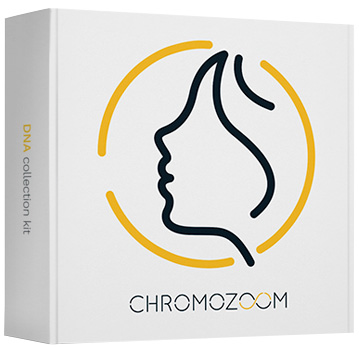Irritant contact dermatitis
Contact dermatitis is an inflammatory condition of the epidermis that appears after contact with a foreign substance. Irritant dermatitis occurs four times more frequent than allergic dermatitis.
- Irritant contact dermatitis (ICD) is caused by the irritation of the skin by a foreign substance resulting in the disruption of the skin barrier integrity and the activation of congenital (present from birth) immunity.
- Allergic contact dermatitis (ACD) is a reduced hypersensitive, immune-caused reaction resulting from repeated contact of an allergen with the skin. The major symptoms of contact dermatitis include skin redness, increased exfoliation of the skin, itching, and burning sensations.
Congenital immunity
Congenital immunity is also referred to as nonspecific immunity. Nonspecific immunity is one of the two basic branches of the immune system – the second branch is known as acquired immunity. Congenital (innate) immunity is responsible for the quick response of the body to an antigen (any molecule that induces an immune response) usually within a very short time, but with relatively low specificity.On the other hand, acquired immunity responds more specifically, but significantly slower. To induce an immune response within congenital immunity, no previous encounter with this antigen is necessary. The cells and molecules of congenital immunity are found on the skin in abundance and they act as the first protective barriers against harmful microorganisms. At the same time, the immune system is involved in the development and progression of ICD in the case of disorders in its regulation.
Irritant contact dermatitis
Irritant contact dermatitis is caused by the activation of the congenital (present from birth) immune system reacting to chemical substances with inflammatory-causing properties.The individual skin resistance and quality of skin barrier influences the development of ICD. Those most at risk suffer from atopic eczema and distinctively dry skin. In addition to external and internal environmental influences, genetic predisposition also plays a role in the development of ICD. It is possible to estimate the risk of disease onset by identifying the genetic variants involved in ICD development. This information can help accurately diagnosis contact dermatitis together with correct prevention.
Individuals with a higher risk of developing ICD may be better informed based on a dermatological history about the risk factors and preventative means and can therefore eliminate their exposure (e.g. by choosing a less hazardous job).
Hazardous occupations
Occupational risk groups include professions who are subjected to wet conditions as a routine part of their work – commonly referred to as wet professions (e.g. hairdressers, cleaners, medical staff, etc.).
Exogenous and endogenous (external and internal) factors
ICD is a multifactorial disease caused by numerous external and internal factors which trigger a number of pathophysiological responses including disruption of the skin barrier, keratinocyte impairment, and the release of proinflammatory mediators (inflammation-inducing agents).There are many factors involved which may lead to irritation. External factors include UV radiation, extreme heat or cold conditions, mechanical factors (e.g. friction, pressure, vibration), chemicals, and metals (especially nickel) among others. Internal factors include youth (as sensitivity and predisposition to ICD decline with age), gender (higher prevalence in females), and a disrupted skin barrier (due to atopic eczema or other skin diseases).
The intensity of ICD manifestations for external factors is determined by the amount, volume, duration, and frequency of action, chemical nature of the irritant, and its capability to penetrate the skin.
The resulting changes in the body (pathophysiology) of contact dermatitis
The exact mechanism of ICD development is not fully understood. The mechanisms of various irritants are different, but the resulting manifestations are similar in result. The skin barrier, consisting of skin cells (keratinocytes) which make up 95% of skin cells, plays the major role in the development of ICD. Keratinocytes are the first cells active in response to an irritant and play a very important role in the development of ICD.
Due to the irritant effects, the stimulation of skin cells, and the production of pro-inflammatory cytokines there is a cascade of (multiple) reactions that result in triggering the proinflammatory response of the skin. Repeated irritant effects lead to a decrease in skin hydration and this results in dry skin conditions. When exfoliation (the natural removal dead skin cells) occurs, the effects of ICD worsen.
Forms of irritant contact dermatitis
ICD can be classified into acute form (severe) caused by direct skin damage at the site of a strong irritant action (e.g. acids, alkaline, detergents, UV radiation). The acute form begins from the first irritant contact. This condition results in the redness and swelling of the affected area along with other symptoms.
The chronic form is the result of long-term and repeated interaction of substances with a low irritation effect or the steadily increasing effects of these substances. Skin changes appear only after an extended period. The chronic form is frequently prevalent on the hands. It appears as dry, red, and itchy skin together with desquamation (skin peeling).
In the chronic form, allergic dermatitis may develop from the initial irritant dermatitis.
